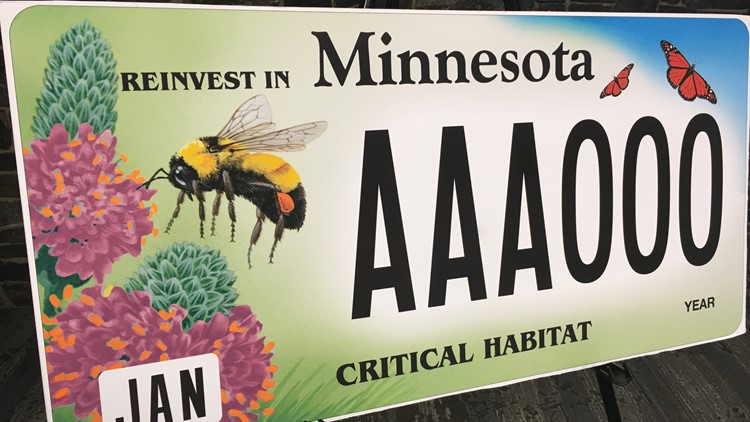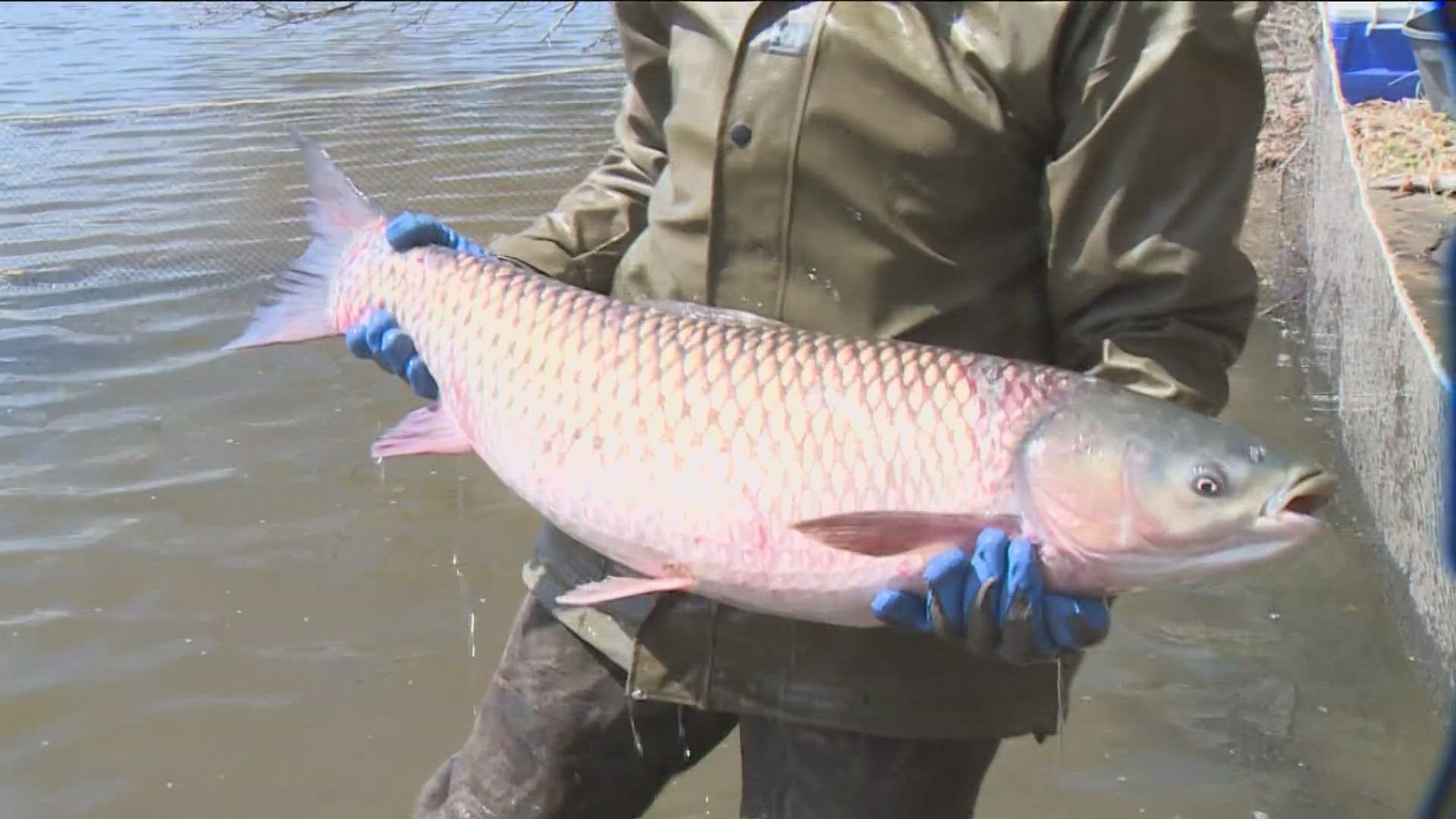ST PAUL, Minn. — A new license plate from the Minnesota Department of Natural Resources could add a little beauty to your bumper while helping to preserve pollinator habitats.
The latest plate in the "critical habitat" series was revealed Thursday. The license plate features pollinators like a bee and butterflies, joining other previously released designs like the turkey, moose, common loon and showy lady slipper.
The new license plate is available online and at DVS offices across the state.
Minnesotans can buy the plates even if their current tabs are not expired. A $30 annual contribution to the Reinvest in Minnesota Critical Habitat Program will help to preserve important wildlife habitats, including wetlands, prairies and old growth forests. Any contribution beyond that will go toward buying and managing natural habitats that are preserved as public lands.
Artist Timothy Turenne designed the license plate. It shows Minnesota's state butterfly, the monarch, and a rusty patched bumble bee, which was recently designated the state bee.
“Many Minnesotans share a commitment to maintaining healthy populations of bees, butterflies and other native pollinators,” DNR Commissioner Sarah Strommen said Thursday in a news release. “This beautiful new critical habitat license plate is an opportunity to show your support for pollinators while providing important funding to preserve habitats.”
The DNR also says Minnesotans can do other things to help pollinators, like growing milkweed and native flowers, keeping some open ground and unmown roadsides, and reducing their pesticide use.
More information about the pollinator plates can be found on the DNR website.



